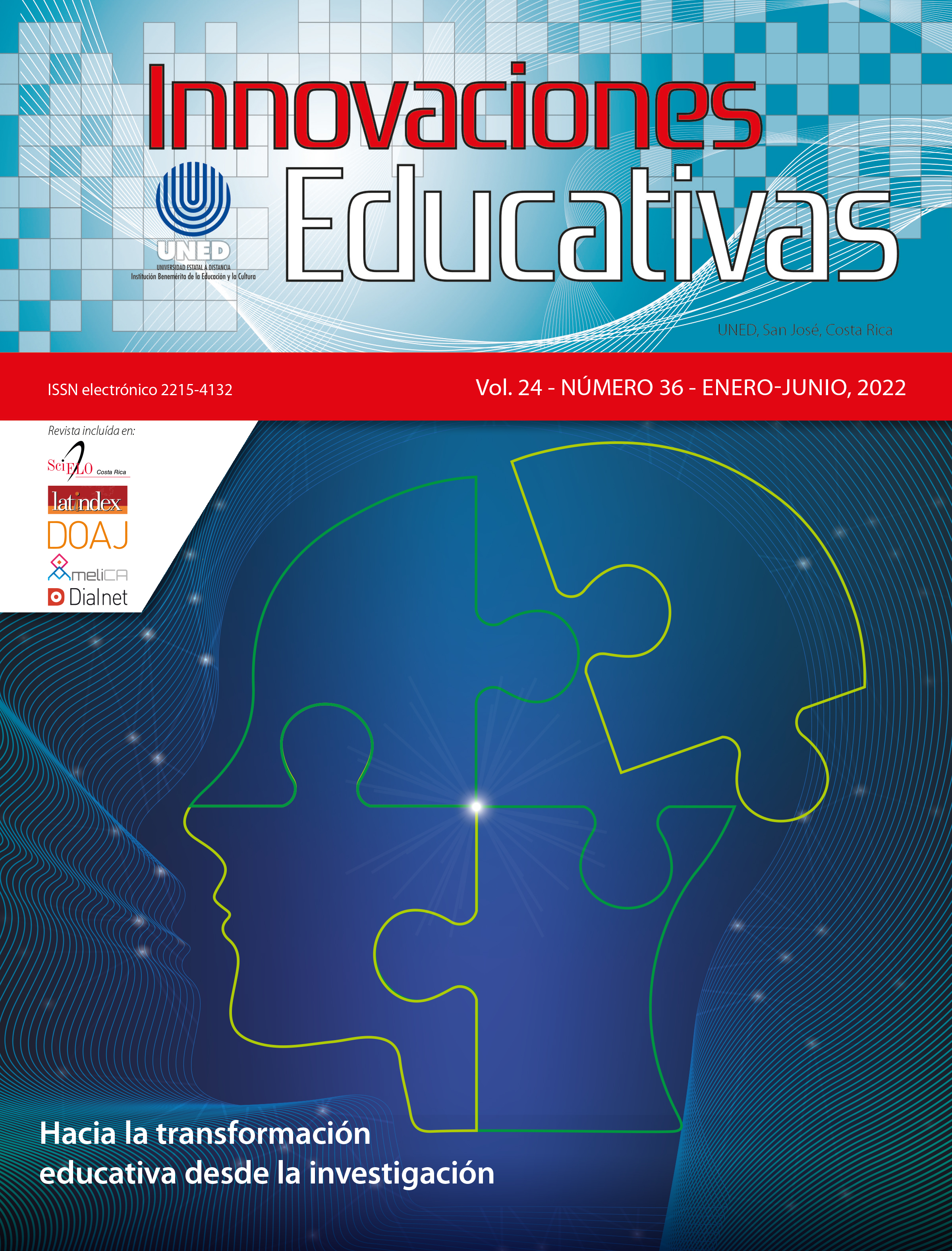Using word processing techniques for extracting professional skills and competencies from state university profiles in Costa Rica
DOI:
https://doi.org/10.22458/ie.v24i36.3818Keywords:
random variable, probability distribution, education theory, teaching of statistics, secondary education, educationAbstract
The random variable and its probability distribution are fundamental concepts in statistical and probabilistic school education because they manifest in everyday experiences. Teaching them becomes a complex task due primarily to the difficulties associated with understanding them and the concept of function. Therefore, we proposed as a study objective to assess the random variable's instruction process and its probability distribution in Chilean secondary education, based on the Theory of Didactic Situations (TSD) and the Theory of Registration of Semiotic Representations (TRRS). We designed a test containing a didactic situation applied to 10th-grade Chilean students (15 to 16 years old) with a qualitative perspective and a descriptive-interpretive approach. The findings showed that more than half of the students (64%) managed to identify and represent the random variable in verbal, figural, or tabular language, and a similar percentage (59%), its probability distribution. Concerning the TRRS, this could indicate that students are in the process of building both objects. Subsequently from the TSD, we observed the vital role that the teacher played in the phases of the said didactic situation. Studying didactic theories, we discovered that bringing complex objects to the classroom can help actual teachers and those being trained to look at their practice with more understructure to make it more accessible and understandable to their students.
References
BIRD, S.; LOPER, E. & KLEIN, E. (2009), Natural Language Processing with Python. O’Reilly Media Inc. Recuperado el 15 de setiembre del 2021 de https://pypi.org/project/nltk
BENEITONE, P. C.; GONZÁLEZ, J.; MALETÁ, M.; SIUFI, G. y WAGENAAR, R. (2007). Reflexiones y perspectivas de la Educación Superior en América Latina. España: Publicaciones de la Universidad de Deusto.
BERROCAL, F.; GARCÍA, A. y RAMÍREZ-VIELMA, R. (2021). La elaboración de modelos de competencias técnicas y su aplicación en la detección de necesidades formativas. Gestión y Análisis de Políticas Públicas, Nueva Época (GAPP), 26, 111–129. https://doi-ñorg.ezproxy.sibdi.ucr.ac.cr/10.24965/gapp.i26.10813.
CERVANTES, G. (2007). Competencias y habilidades en la nueva cultura educativa. Universidad Autónoma Metropolitana. Fuentes Humanísticas. Vol. 19, n.o 35.
CONSEJO NACIONAL DE RECTORES (1982) Convenio de coordinación de educación superior universitaria estatal en Costa Rica. 20 de marzo de 1982. Artículo 3, inciso 2.
CORRALES, K. y SANDI, K. (2019). El futuro de las carreras universitarias costarricenses camino a la industria 4.0. San José: CONARE.
DARWING, C (1859). El origen de las especies. Estados Unidos: Editorial Charles Darwing.
FREY, C. & Osborne, M. (2017). The future of employment: How susceptible are jobs to computerisation? Technological Forecasting and Social Change, Elsevier, vol. 114(C), pp. 254-280.
JESUTHASAN, R. & BOUDREAU, J.W. (2018). Reinventing Jobs. A 4-step approach for applying automation to work. Harvard Business Press. Boston, Massachusetts.
MACKIE, J. & LIU, R. (2021). PyMuPDF (1.18.13) Adaptador de la librería MuPDF para python. pypi.org. https://pypi.org/project/PyMuPDF/
MCKINNEY, W. (2021). Pandas (1.2.4) [Herramienta para el análisis de datos]. pypi.org. https://pypi.org/project/pandas/
O*NET 26.0 Database (2020). O*NET Resource Center. Recuperado el 14 de julio del 2020 de https://www.onetcenter.org/database.html
PERASSO, V. (2016). ¿Qué es la cuarta revolución industrial? (¿y por qué debería preocuparnos?). Recuperado el 13 de julio del 2020 de BCC mundo: https://www.bbc.com/mundo/noticias-37631834
PYTHON (2018). Lenguaje de programación. python.org. Versión 3.6.8. https://www.python.org/downloads/release/python-368/
SANTOS, R. (2013). Levantarse y luchar. Editorial Conecta. Barcelona, España.
TURK, J. T. & Stephens, M. (2020). Jellyfish (0.8.8) [Biblioteca para hacer pareo aproximado y fonético.]. pypi.org. https://pypi.org/project/jellyfish
VELÁZQUEZ ÁVILA, K. y SANTIESTEBAN NARANJO, E. (2018). Dicotomía entre habilidad y competencia. Opuntia Brava, 9(1), 40-49. Recuperado a partir de http://opuntiabrava.ult.edu.cu/index.php/opuntiabrava/article/view/116

